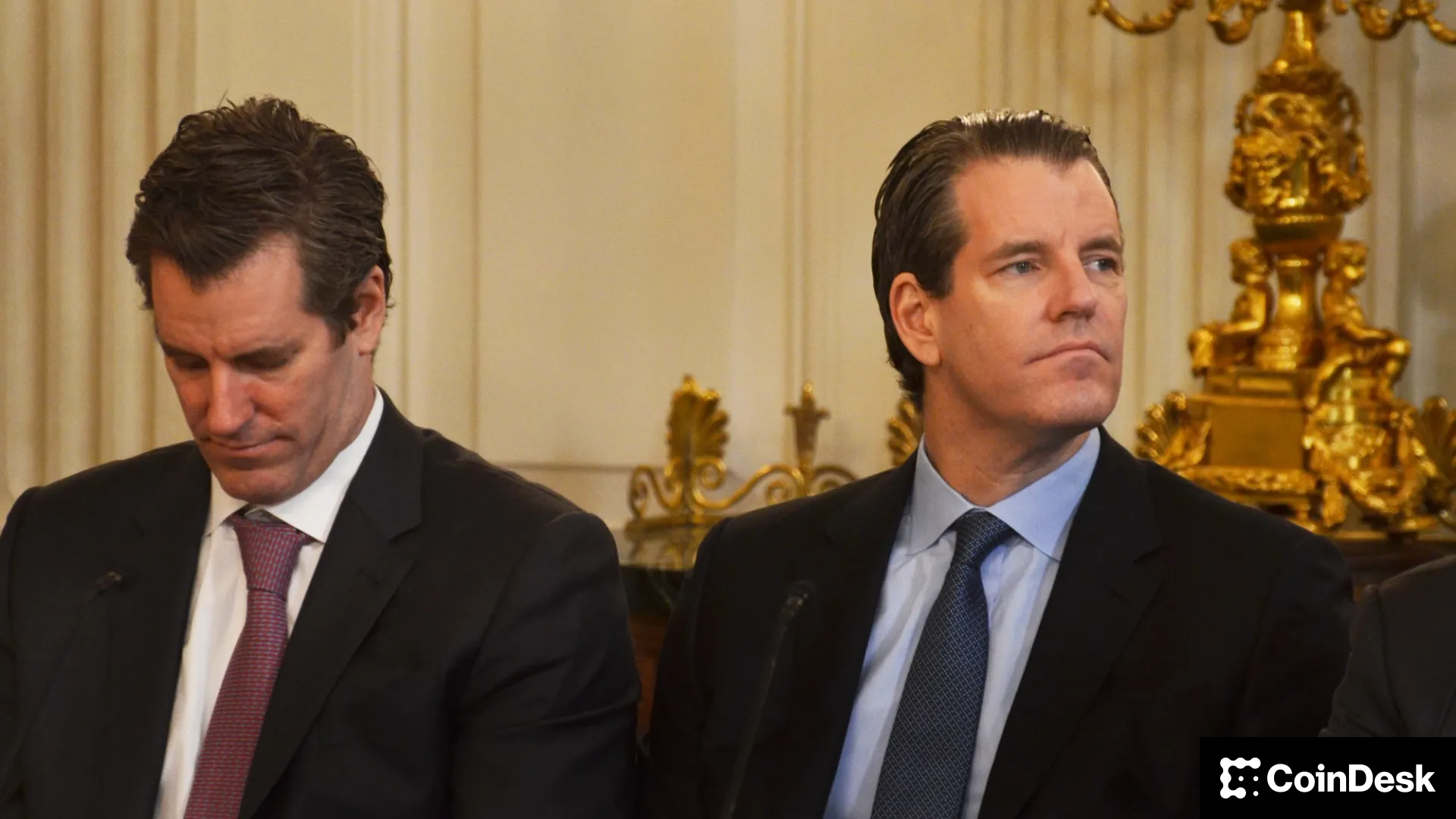Uncategorized
The Evolution of Structured Crypto Products

Australia-based digital asset firm Zerocap is in a prime position to observe the development of the structured product space, having operated OTC, market making, derivatives and crypto custody businesses since it was founded in 2018.
Here Zerocap’s head of sales Mark Hiriart discusses how these products are changing, a new semi-principal protected product his firm is launching, how demand for structured products varies by geographical region, and the most unusual structured product request he’s seen.
Tell us about Zerocap.
Zerocap is Australia’s leading institutional digital assets firm, established in 2018. We operate multiple business lines including an OTC desk, market making and derivatives business, all underpinned by our custody offering. We operate as a Corporate Authorised Representative of an Australian Financial Services License (AFSL) holder, which authorizes us to trade financial products like derivatives with wholesale accredited investors. We have also established a number of high-profile partnerships with institutions like ANZ Bank for their stablecoin, and the Reserve Bank of Australia (RBA) for various proof of concepts and pilots. While we’ve become the leading liquidity player in Australia over the last 18 months, our reach extends to clients in over 50 countries.
You recently announced a new product — tell us about it.
We’ve partnered with CoinDesk Indices to launch a semi-principal-protected structure on the CoinDesk 20 Index (CD20). The product offers upside exposure to the CD20 with principal protection limiting downside risk to 5%, while offering up to 40% return potential on the upside. This is the first in a series of structured products we’ll be creating with CoinDesk Indices, featuring different payoffs for various risk appetites.
The timing is particularly relevant given the current market sentiment. With the rally in digital assets around Trump and potential global trade headwinds to navigate, we anticipate some sideways action in the near term. This medium-risk exposure product is well-suited to the current macro environment.
What gap in the market does your new product fill, and who is it designed for?
In the digital asset space, we don’t have established benchmarks like there are in traditional markets. For example, if an Australian investor or someone in Hong Kong wants U.S. tech exposure, they typically look for products linked to the NASDAQ or QQQ ETF. In crypto, we haven’t had that level of indexization yet. This product is designed for three groups: family offices and high-net-worth individuals seeking to enter the space; investors wanting broad-based crypto exposure without deep diving into individual assets; and those who understand bitcoin but want diversified exposure with managed risk.
Why did you choose to base it on the CoinDesk 20 Index?
We selected the CoinDesk 20 Index for four key reasons. One, we deeply respect the CoinDesk brand and their index team’s quality. Two, our strong relationship with Bullish provides access to futures contracts for hedging. Three, there’s a clear market need for index products in the crypto space. And lastly, my background in equity derivatives at investment banks shows me how people use these products, and it’s a natural evolution for crypto.
How are structured products evolving?
Two main factors have historically limited structured product adoption: one, high crypto volatility meant simple spot positions could provide significant returns, and two, the prevalence of perpetual futures with high leverage reduced demand for options markets. That balance is shifting, however, as more participants hold structural positions. Venture funds, portfolio managers with value-based allocation policies and large mandate holders need specific hedging solutions that perpetuals can’t provide due to path dependency.
What impact is the advent of crypto ETFs having on structured products?
ETFs serve as a «gateway drug» to structured products rather than cannibalizing them. The introduction of products like the BlackRock ETF has brought new participants into the crypto space. As these investors become comfortable with crypto exposure through ETFs, they naturally progress to exploring more sophisticated products for enhanced returns or risk management.
What institutional demand patterns are you seeing for crypto structured products in Asia versus other regions?
Asia typically shows a strong appetite for auto-call structures, where investors sell downside or puts to receive large coupons based on price targets on the upside. This differs from the more conservative approach in U.S. and European markets. Having worked at JP Morgan and Morgan Stanley in equity derivatives trading, I’ve seen these regional differences firsthand.
Australia sits somewhere in between, and at Zerocap, we’ve successfully converted non-structured product players into crypto structured product users. We’re looking to expand this expertise into Asia, subject to regulatory requirements.
Are we at risk of over-engineering crypto’s volatility out of existence?
As crypto develops, different assets naturally have different volatility profiles. While stablecoins maintain stability and bitcoin’s volatility may dampen with institutional adoption, there’s still plenty of opportunity for high-volatility exposure down the market cap curve, from Solana to memecoins. The market is maturing to cater to different investor needs. For portfolio allocation, whether it’s 1%, 2% or 5%, investors need broad beta exposure through established assets like bitcoin and ether, complemented by smaller allocations to emerging opportunities.
What’s been the most unusual structured product request you’ve seen?
We are one of the few desks globally that offer derivatives on alt coins and hence we get asked to price some wild and wacky things. I can officially confirm that we have traded an option on FARTCOIN recently, which is quite something for someone who has spent his career at the big US banks!
With that in mind, where do you see DeFi and traditional structured products intersecting?
While DeFi and structured products present interesting opportunities, we need to acknowledge that crypto is already complex, and structured products add another layer of complexity. However, tokenization makes sense for legal documentation and fungibility, since you can audit source code to understand exactly what you’re getting. This space will grow with real-world asset (RWA) tokenization, but widespread adoption may take time.
When do you think digital assets will become long-term investments?
The transition from trading vehicles to long-term investments will occur as protocols and tokens demonstrate clear value propositions and use cases. Bitcoin has proven itself to be viewed as digital gold, while it is still debatable to callEthereum «ultrasound money”. Other protocols are still fighting to find their niche and demonstrate tangible value in the digital economy. As these assets become more integrated into economic systems, their long-term value propositions will become more measurable.
For more information visit https://zerocap.com/.
Authors’ views and opinions are their own and not associated with CoinDesk Indices. The interview was conducted by CoinDesk Indices and is not associated with CoinDesk editorial.
CoinDesk Indices, Inc., including CC Data Limited, its affiliate which performs certain outsourced administration and calculation services on its behalf (collectively, “CoinDesk Indices”), does not sponsor, endorse, sell, promote, or manage any investment offered by any third party that seeks to provide an investment return based on the performance of any index. CoinDesk Indices is neither an investment adviser nor a commodity trading advisor and makes no representation regarding the advisability of making an investment linked to any CoinDesk Indices index. CoinDesk Indices does not act as a fiduciary. A decision to invest in any asset linked to a CoinDesk Indices index should not be made in reliance on any of the statements set forth in this document or elsewhere by CoinDesk Indices. All content displayed here or otherwise used in connection with any CoinDesk Indices index (the “Content”) is owned by CoinDesk Indices and/or its third-party data providers and licensors, unless stated otherwise by CoinDesk Indices. CoinDesk Indices does not guarantee the accuracy, completeness, timeliness, adequacy, validity, or availability of any of the Content. CoinDesk Indices is not responsible for any errors or omissions, regardless of the cause, in the results obtained from the use of any of the Content. CoinDesk Indices does not assume any obligation to update the Content following publication in any form or format. © 2025 CoinDesk Indices, Inc. All rights reserved.
Business
Crypto Trading Firm Keyrock Buys Luxembourg’s Turing Capital in Asset Management Push

Crypto trading firm Keyrock said it’s expanding into asset and wealth management by acquiring Turing Capital, a Luxembourg-registered alternative investment fund manager.
The deal, announced on Tuesday, marks the launch of Keyrock’s Asset and Wealth Management division, a new business unit dedicated to institutional clients and private investors.
Keyrock, founded in Brussels, Belgium and best known for its work in market making, options and OTC trading, said it will fold Turing Capital’s investment strategies and Luxembourg fund management structure into its wider platform. The division will be led by Turing Capital co-founder Jorge Schnura, who joins Keyrock’s executive committee as president of the unit.
The company said the expansion will allow it to provide services across the full lifecycle of digital assets, from liquidity provision to long-term investment strategies. «In the near future, all assets will live onchain,» Schnura said, noting that the merger positions the group to capture opportunities as traditional financial products migrate to blockchain rails.
Keyrock has also applied for regulatory approval under the EU’s crypto framework MiCA through a filing with Liechtenstein’s financial regulator. If approved, the firm plans to offer portfolio management and advisory services, aiming to compete directly with traditional asset managers as well as crypto-native players.
«Today’s launch sets the stage for our longer-term ambition: bringing asset management on-chain in a way that truly meets institutional standards,» Keyrock CSO Juan David Mendieta said in a statement.
Read more: Stablecoin Payments Projected to Top $1T Annually by 2030, Market Maker Keyrock Says
Business
Crypto Trading Firm Keyrock Buys Luxembourg’s Turing Capital in Asset Management Push

Crypto trading firm Keyrock said it’s expanding into asset and wealth management by acquiring Turing Capital, a Luxembourg-registered alternative investment fund manager.
The deal, announced on Tuesday, marks the launch of Keyrock’s Asset and Wealth Management division, a new business unit dedicated to institutional clients and private investors.
Keyrock, founded in Brussels, Belgium and best known for its work in market making, options and OTC trading, said it will fold Turing Capital’s investment strategies and Luxembourg fund management structure into its wider platform. The division will be led by Turing Capital co-founder Jorge Schnura, who joins Keyrock’s executive committee as president of the unit.
The company said the expansion will allow it to provide services across the full lifecycle of digital assets, from liquidity provision to long-term investment strategies. «In the near future, all assets will live onchain,» Schnura said, noting that the merger positions the group to capture opportunities as traditional financial products migrate to blockchain rails.
Keyrock has also applied for regulatory approval under the EU’s crypto framework MiCA through a filing with Liechtenstein’s financial regulator. If approved, the firm plans to offer portfolio management and advisory services, aiming to compete directly with traditional asset managers as well as crypto-native players.
«Today’s launch sets the stage for our longer-term ambition: bringing asset management on-chain in a way that truly meets institutional standards,» Keyrock CSO Juan David Mendieta said in a statement.
Read more: Stablecoin Payments Projected to Top $1T Annually by 2030, Market Maker Keyrock Says
Business
Gemini Shares Slide 6%, Extending Post-IPO Slump to 24%

Gemini Space Station (GEMI), the crypto exchange founded by Cameron and Tyler Winklevoss, has seen its shares tumble by more than 20% since listing on the Nasdaq last Friday.
The stock is down around 6% on Tuesday, trading at $30.42, and has dropped nearly 24% over the past week. The sharp decline follows an initial surge after the company raised $425 million in its IPO, pricing shares at $28 and valuing the firm at $3.3 billion before trading began.
On its first day, GEMI spiked to $45.89 before closing at $32 — a 14% premium to its offer price. But since hitting that high, shares have plunged more than 34%, erasing most of the early enthusiasm from public market investors.
The broader crypto equity market has remained more stable. Coinbase (COIN), the largest U.S. crypto exchange, is flat over the past week. Robinhood (HOOD), which derives part of its revenue from crypto, is down 3%. Token issuer Circle (CRCL), on the other hand, is up 13% over the same period.
Part of the pressure on Gemini’s stock may stem from its financials. The company posted a $283 million net loss in the first half of 2025, following a $159 million loss in all of 2024. Despite raising fresh capital, the numbers suggest the business is still far from turning a profit.
Compass Point analyst Ed Engel noted that GEMI is currently trading at 26 times its annualized first-half revenue. That multiple — often used to gauge whether a stock is expensive — means investors are paying 26 dollars for every dollar the company is expected to generate in sales this year. For a loss-making company in a volatile sector, that’s a steep price, and could be fueling investor skepticism.
-

 Business11 месяцев ago
Business11 месяцев ago3 Ways to make your business presentation more relatable
-

 Fashion11 месяцев ago
Fashion11 месяцев agoAccording to Dior Couture, this taboo fashion accessory is back
-

 Entertainment11 месяцев ago
Entertainment11 месяцев ago10 Artists who retired from music and made a comeback
-

 Entertainment11 месяцев ago
Entertainment11 месяцев ago\’Better Call Saul\’ has been renewed for a fourth season
-

 Entertainment11 месяцев ago
Entertainment11 месяцев agoNew Season 8 Walking Dead trailer flashes forward in time
-

 Business11 месяцев ago
Business11 месяцев ago15 Habits that could be hurting your business relationships
-

 Entertainment11 месяцев ago
Entertainment11 месяцев agoMeet Superman\’s grandfather in new trailer for Krypton
-

 Entertainment11 месяцев ago
Entertainment11 месяцев agoDisney\’s live-action Aladdin finally finds its stars




